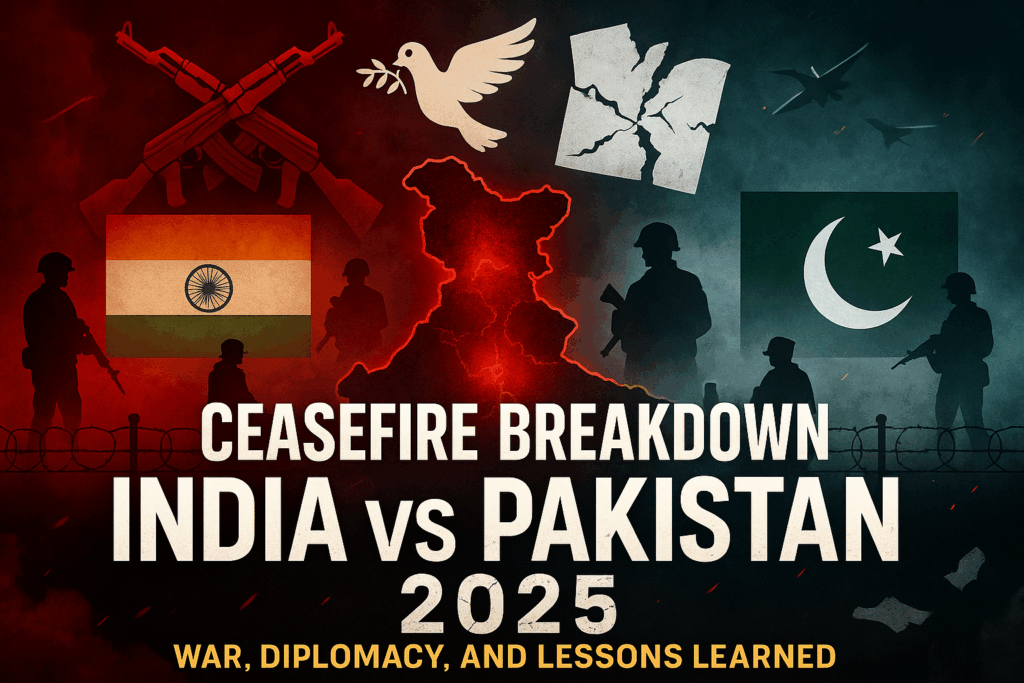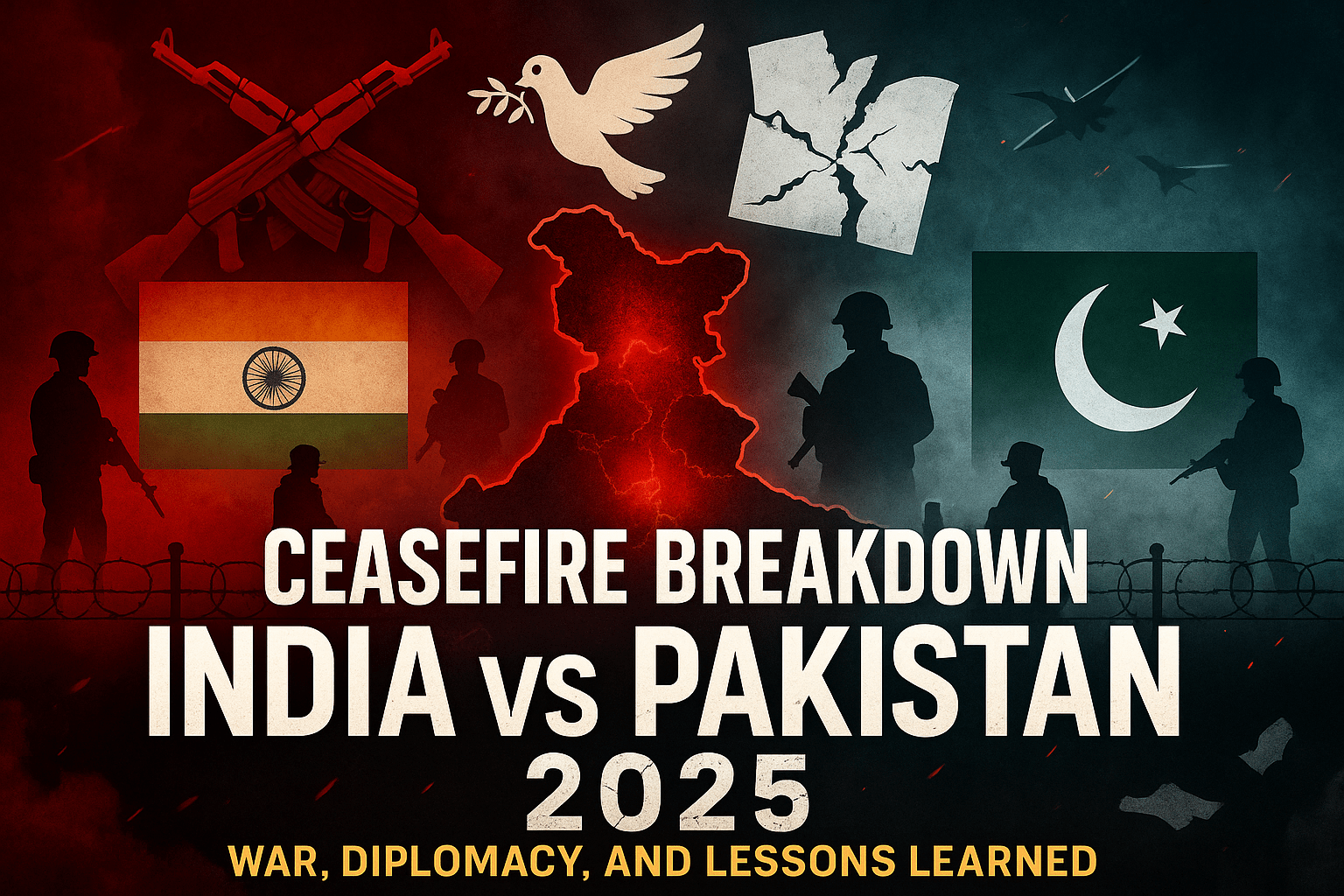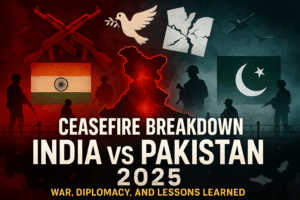What Is a Ceasefire? – Understanding Ceasefires Through the Lens of the Ind vs Pak War 2025

What Is a Ceasefire?
A ceasefire is a formal agreement between warring parties to halt hostilities temporarily, often to create space for diplomacy, humanitarian aid, or peace negotiations. While not a permanent resolution, it aims to de-escalate violence and prevent further loss of life. Ceasefires can be unilateral (one-sided) or bilateral (mutual), but their success depends on trust, monitoring mechanisms, and adherence by both sides .
The 2025 India-Pakistan Ceasefire: A Case Study
The 2025 conflict between India and Pakistan exemplifies both the potential and fragility of ceasefire agreements. Here’s how events unfolded:
1. Background of the Conflict
The war erupted after a terrorist attack in Pahalgam, Indian-administered Kashmir, on April 22, 2025, which killed 26 civilians. India blamed Pakistan-backed militant groups, while Pakistan denied involvement and called for an international investigation . Tensions escalated into cross-border strikes, drone warfare, and missile attacks, marking the worst clashes in decades .
2. The Ceasefire Agreement
On May 10, 2025, after four days of intense fighting and U.S.-mediated talks, both nations agreed to an immediate ceasefire effective at 5:00 PM IST. U.S. President Donald Trump announced the deal, praising the “common sense” of both countries, while Indian and Pakistani military leaders activated hotlines to enforce the truce . The agreement included plans for broader talks at a neutral venue, though India later clarified no such discussions were confirmed .
3. Immediate Violations and Accusations
- Within hours, explosions and artillery fire resumed along the Line of Control (LoC) in Kashmir. India accused Pakistan of deploying drones and shelling border areas, while Pakistan blamed India for initiating violations .
- Social media amplified chaos: Kashmir’s chief minister, Omar Abdullah, posted videos of tracer fire and explosions, declaring, “This is no ceasefire” .
- Both sides claimed civilian casualties, with over 66 deaths reported by May 10 .
4. International Involvement
- U.S. Diplomacy: Secretary of State Marco Rubio and Vice President JD Vance engaged directly with Indian PM Narendra Modi and Pakistani PM Shehbaz Sharif to broker the truce .
- Third-Party Mediators: Saudi Arabia, Turkey, China, and the UK also played roles in facilitating dialogue .
- Global Concerns: The UN and G7 nations urged restraint, fearing nuclear escalation given both countries’ arsenals .
Why Ceasefires Fail: Lessons from 2025
- Lack of Trust: Decades of rivalry over Kashmir and mutual accusations of terrorism undermined confidence in the agreement .
- Provocations and Misinformation: Cross-border drone strikes and conflicting narratives about violations fueled tensions. For example, Pakistan denied targeting Indian airbases, while India dismissed claims of a captured pilot as “fake” .
- Incomplete De-Escalation: Non-military punitive measures, like trade suspensions and visa cancellations, remained in place, perpetuating hostility .
The Path Forward
While the 2025 ceasefire temporarily halted large-scale combat, its fragility underscores the need for:
- Neutral Monitoring: Independent verification of violations to prevent misinformation.
- Addressing Root Causes: Resolving Kashmir’s status and water-sharing disputes through sustained dialogue .
- Diplomatic Momentum: Building on U.S. and Saudi mediation to institutionalize peace frameworks .
As Pakistani PM Shehbaz Sharif noted, “War is not like a regular argument—it’s scary” . The 2025 crisis serves as a stark reminder that ceasefires are only the first step toward lasting peace.
Sources: Reuters | CBS News | The Washington Post | U.S. State Department













Post Comment